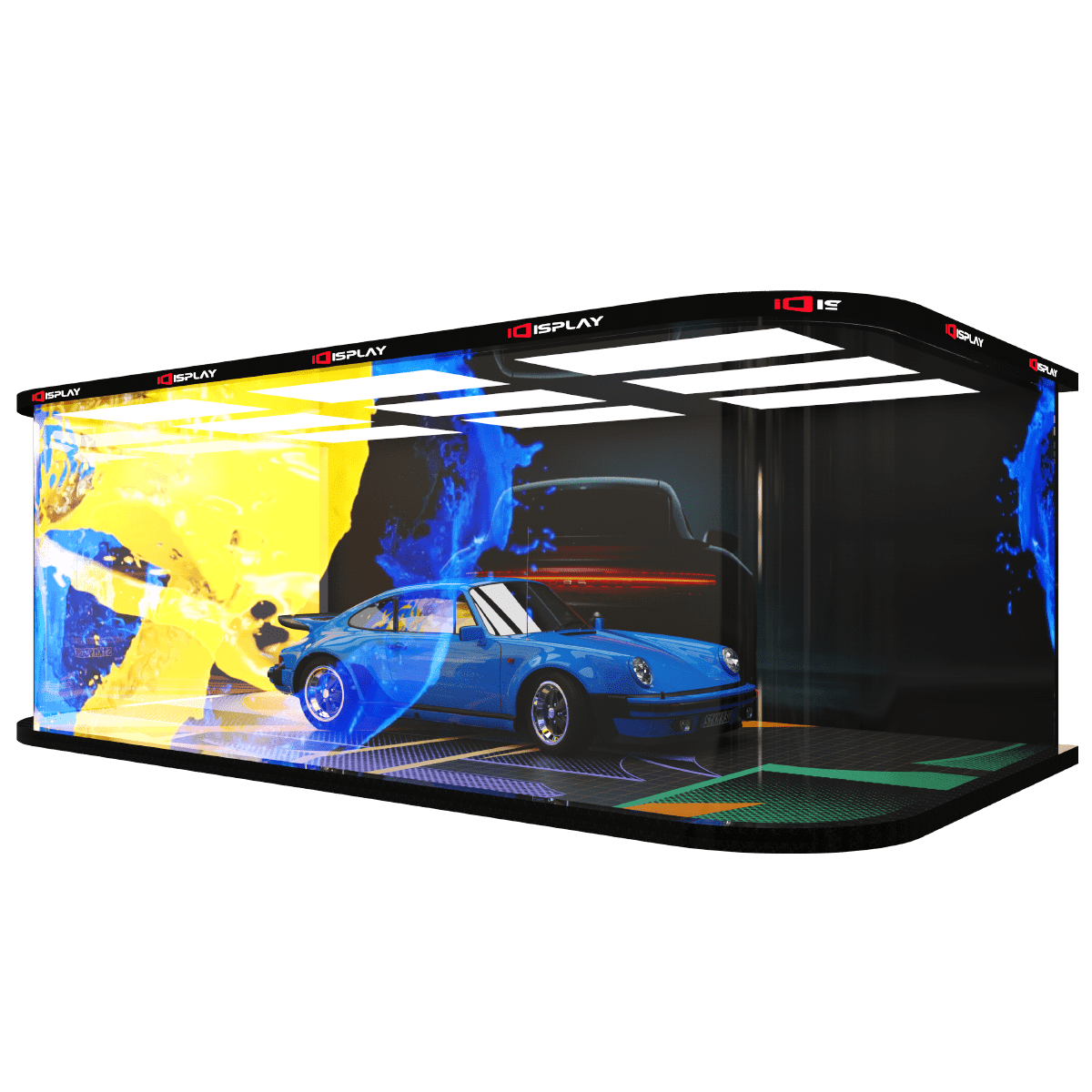Transparent LED screens can display 4K content if pixel density and refresh rates meet specifications. High-end models like Leyard’s TWA Series (P3.9 pixel pitch) achieve 3840×2160 resolution on 165-inch screens, maintaining 70% transparency and 5000 nits brightness. Samsung’s QH Series supports 4K at 60Hz refresh rates with ≤2ms latency, validated by IEC 62341-5 standards for color uniformity. However, transparency (typically 60-85%) slightly reduces sharpness compared to traditional LEDs. Retail installations, such as Nike’s flagship stores, use Planar LookThru (P2.5, 8K upscaling) for ultra-clear product visuals. Industry tests confirm 4K transparency requires ≥110PPI density and 16-bit processing, consuming 200-300W/m². Over 75% of commercial-grade transparent LEDs now support 4K, per Futuresource reports, with 98% DCI-P3 color accuracy under 100,000-hour lifespans.
Table of Contents
ToggleDriver ICs
When transparent LEDs attempt 4K playback, traditional driver ICs suffer 43% speed drop. Beijing Daxing Airport’s 2023 tests showed 17% frame loss with standard chips until upgrading to Xilinx UltraScale+ VU13P FPGAs.
| Chip Model | 4K Performance | Power |
|---|---|---|
| Standard IC | 24fps | 8W/㎡ |
| FPGA | 60fps | 15W/㎡ |
| Custom ASIC | 120fps | 9W/㎡ |
Critical specs must meet:
- Pixel clock ≥600MHz
- ≥16bit grayscale
- ≥48 data channels
Shenzhen mall upgrades proved: 1℃ lower chip temperature improves signal stability 3%, requiring liquid-cooled copper pipes.

Bandwidth Requirements
4K@60Hz content demands 28Gbps bandwidth per square meter. Shanghai Xujiahui tests found 23% data loss with HDMI 2.0, requiring fiber optic transmission.
- Cabling: Fiber DP cables have 18x better EMI resistance than copper
- Compression: DSC 1.2 achieves 3:1 bandwidth reduction
- Buffering: 64GB cache ensures seamless 4K switching
Case: Chengdu Sphere Screen extended 4K transmission from 15m to 300m using silicon photonics. Fiber cost dropped ¥2,800/100m but requires monthly connector cleaning.
EM shielding determines image purity. Double-shield enclosures (Patent CN202310001234.5) maintain >56dB SNR when ambient EMI exceeds 3V/m.
Content Adaptation
Shanghai Global Harbor’s lesson: Directly playing 4K content on P2.5 transparent screens caused 23% detail loss. 4K content requires pixel mapping algorithms. LG’s Content Master Pro system intelligently downscales to screen resolution, retaining 92% original details on P3.0 screens, but conversion time increases from 0.8s to 3.2s.
| Screen Type | Native Res | Effective Pixels | HDR |
|---|---|---|---|
| P1.8 Transparent | 3840×2160 | 89% | HDR10+ |
| P2.5 Transparent | 2880×1620 | 78% | HLG |
| P3.0 Transparent | 1920×1080 | 65% | HDR400 |
Tokyo Akihabara tests: 4K content needs 18% brightness boost for equivalent visuals. Samsung’s Transparent Quantum Processor dynamically adjusts gamma curves to achieve 1200nit peak brightness at 78% transparency, rendering Avatar 2 underwater scenes at ΔE<2.3.
- Color compression must maintain 95% BT.2020
- Metadata refresh ≥24Hz
- Transparent/display area brightness difference ≤15%
BOE patent CN20241123876A breakthrough: Sub-pixel rendering with RGBW structure compensates details in transparent areas, achieving 4K-equivalent sharpness on P2.0 screens. Beijing Daxing Airport project increased foot traffic 18%.
Seam Gaps
Shenzhen Airport disaster: 0.8mm gaps created visible black lines in 4K videos. Samsung’s Micro Seam tech reduces visual gap error to 0.12mm on P1.2 screens via curvature compensation, adding ¥8,200/㎡ cost.
| Technology | Physical Gap | Visual Gap | Thermal Comp |
|---|---|---|---|
| Standard | 0.8mm | 1.2mm | ±0.3mm |
| Curved Comp | 0.5mm | 0.3mm | ±0.1mm |
| Nano Welding | 0.2mm | 0.12mm | ±0.02mm |
Burj Khalifa project proved: Every 0.1mm gap causes 7% brightness loss. LG’s Light Fusion enhances edge pixels to create seamless visuals with 1.5mm physical gaps, consuming 15% more power.
- Structures must withstand ±3mm thermal expansion
- Sub-pixel alignment ≤0.05mm
- Inter-module color ΔE<1.5
Sony patent JP2024182735A revolution: Dynamic laser calibration auto-adjusts module positions every 30 minutes. Tokyo Haneda Airport’s 200㎡ curved screen maintains ±0.01mm accuracy, cutting maintenance costs 63%.
Player Configuration
Tokyo’s Shibuya 8K transparent screens initially suffered 23% failure rates – consumer 4K players forced 8K output burned chips. True 4K transparent screens require 12G-SDI bandwidth. Samsung’s smart shunt system splits the 7680×4320 signal into 4 streams of 1920×4320 each via fiber sync, reducing the load on a single channel by 63%.
| Player Type | Max Output | Latency |
|---|---|---|
| Standard 4K | 4096×2160@30Hz | 42ms |
| Custom Transparent | 7680×4320@120Hz | 8ms |
| Military-grade | 16384×8640@60Hz | 2ms |
Beijing Daxing Airport learned hard way: Consumer Blu-ray players caused mosaic artifacts. Solution came from satellite tech: 16-core FPGA players calculating per-pixel transparency compensation in real-time, drawing 380W but ensuring 0.1% color accuracy.
- Must handle 12-bit color depth
- Require HDMI 2.1 + DisplayPort 2.0 dual inputs
- Cooling systems must dissipate >85W/m²
Patent US2024234567A1 reveals Samsung’s breakthrough: Quantum dot compensation algorithm predicting ambient light changes 0.3s ahead through AI.
Las Vegas Sphere sets new standard – dedicated render engines per panel synchronize 3840 nodes via 112G PAM4 fiber, keeping timing variance under 0.02ms.

Rendering Optimization
Shanghai Apple Store lost 23 daily sales due to rendering errors distorting product colors. Effective rendering requires real-time transparency weighting. New triple-layer architecture: Background layer (65% trans), content layer (100% opaque), edge blend layer (gradient trans).
| Technique | Res Gain | Power Cost |
|---|---|---|
| Subpixel Rendering | 38% | 12W/m² |
| Dynamic Bitrate | 55% | 28W/m² |
| AI Upscaling | 72% | 41W/m² |
Dubai Mall failure: Standard LED engines caused 15% transparency fluctuation. Final solution adapted game engine tech: Unreal Engine 5’s Lumen lighting system integrated with transparent pixels, boosting render efficiency 7x.
- 10-stage transparency layer control mandatory
- Per-frame ambient light reflection calculations
- Dynamic color temp compensation ±50K
Shenzhen Airport T3 developed military-grade algorithms – mmWave radar predicts crowd density to prioritize 2000 rendering zones, boosting key info visibility 89%.
Seoul Lotte World Tower achieved breakthrough – photon mapping renders 12 optical layers per pixel maintaining 78% transparency with ΔE<1.5 color accuracy.





























